We may receive a commission when you use our affiliate links. However, this does not impact our recommendations.
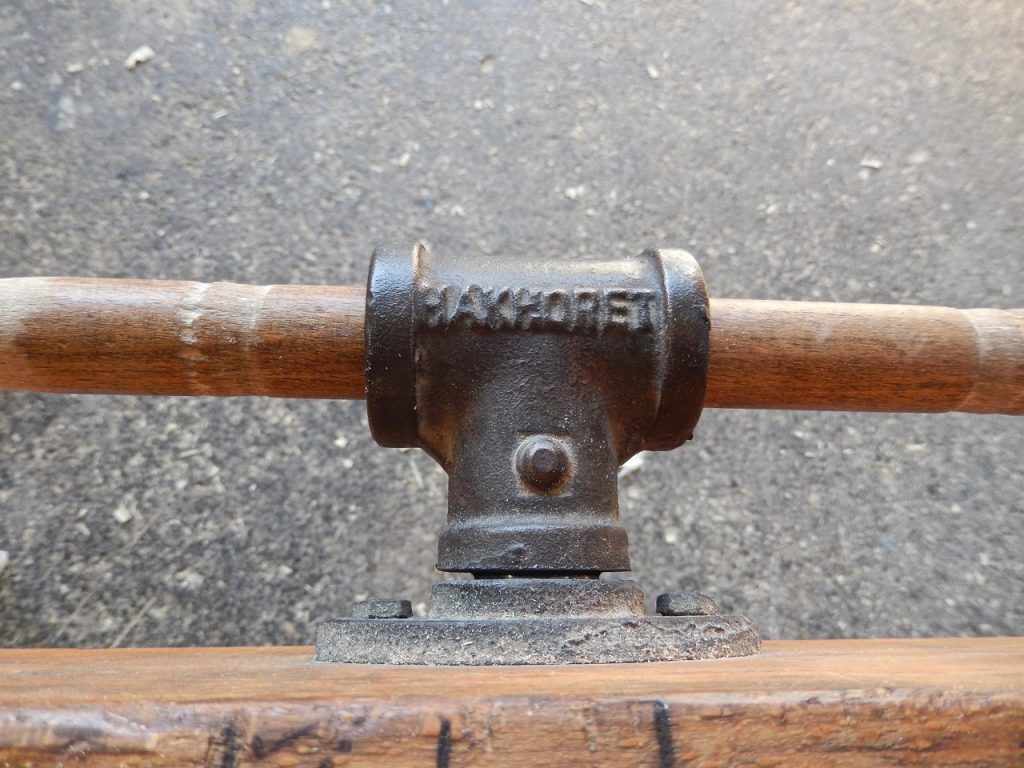 Anyone who has tried to vertically clamp a long object, such as a furniture leg or a rail, at one side of the bench vise knows that tightening the jaw over the object will put tremendous unbalanced forces on the vise’s mechanisms. This phenomenon reduces the functionality of the vise because its effective holding surface is compromised due to the diagonal dislocation. Over time this can damage the vise. A few remedies have been developed over the years to address this. Perhaps the most familiar of them is a bundle of shims that can be stacked together to match the thickness of the clamped object and then be tacked into the opposite side of the jaw. Lee Valley makes one, but you can build one yourself using 1/8” thin stock cut into shims and held together via nut and bolt.
Anyone who has tried to vertically clamp a long object, such as a furniture leg or a rail, at one side of the bench vise knows that tightening the jaw over the object will put tremendous unbalanced forces on the vise’s mechanisms. This phenomenon reduces the functionality of the vise because its effective holding surface is compromised due to the diagonal dislocation. Over time this can damage the vise. A few remedies have been developed over the years to address this. Perhaps the most familiar of them is a bundle of shims that can be stacked together to match the thickness of the clamped object and then be tacked into the opposite side of the jaw. Lee Valley makes one, but you can build one yourself using 1/8” thin stock cut into shims and held together via nut and bolt.
Recently I discovered yet another way, one that I believe is more elegant. During my visit to Gil Arad’s shop in Israel, I noticed that his Hakhoret bench vises are equipped with a simple vise rack stop that is comprised of a threaded stud for wood (stud), also called hanger bolt, and a knob with a threaded through hole (knob).
The stud is embedded into the table while the knob is nested in a counterbore hole in the stationary vise jaw. A long hole, wider than the stud, is drilled in the sliding jaw. This hole houses the stud to allow for a complete closing of the vise.
To use this jig one needs to open the vise to match the approximate thickness of the workpiece. Then the knob is turned out of its counterbore nest along the stud until it heels against the sliding jaw. Now it’s time to place the workpiece in the jaw’s opposite side and tighten the screw. The jig will ensure that the vise jaws will be kept in a parallel configuration so that no harmful stresses will be levied on it.
Will this jig work in both modern wooden and cast iron vises? I think it will. Below you can find drawings that outline the installation of the jig in an all-metal vise. To ensure a proper installation you have to make sure that the vise’s auxiliary jaws are thick and tall and that they engulf the screw and the two guide bars. Anchor the stud in the stationary auxiliary jaw. House the knob partially in a counterbore hole drilled in the stationary auxiliary jaw and in the moving jaw.
Hardware:
Threaded Studs for Wood: Finding a stud is not that difficult. Here is a link from one of my favorite sites – McMaster catalog.
Knob with Threaded Through Hole: I found two alternatives for the knob. In the first link the knobs look like the Hakhoret knob. However, they are longer and possess a threaded shaft which you will have to accommodate in one of the auxiliary jaws. You can find those here…
A good alternative for the knob with a threaded through hole is getting a round thumb nut. Those can be found here…
And finally, you can make the knob yourself by embedding a threaded insert in a wooden disk that you can turn or cut on the bandsaw.
If you decide to build one consider emailing me some pictures, which I will be happy to publish in this blog.
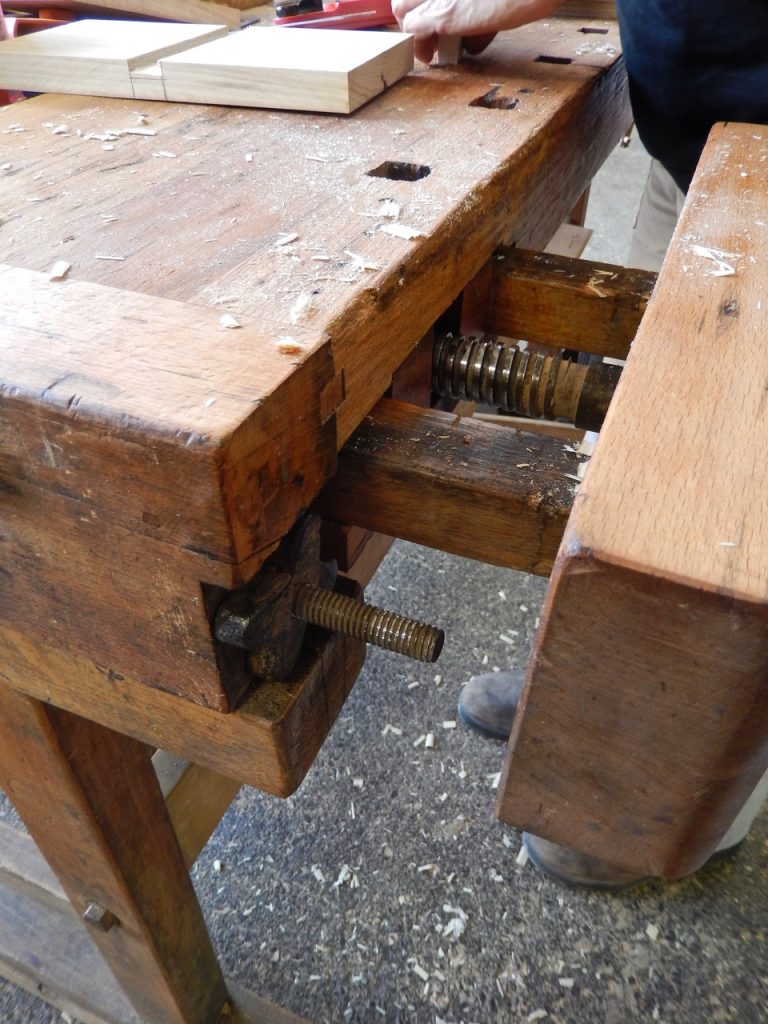
Hakhoret knob in the concealed position
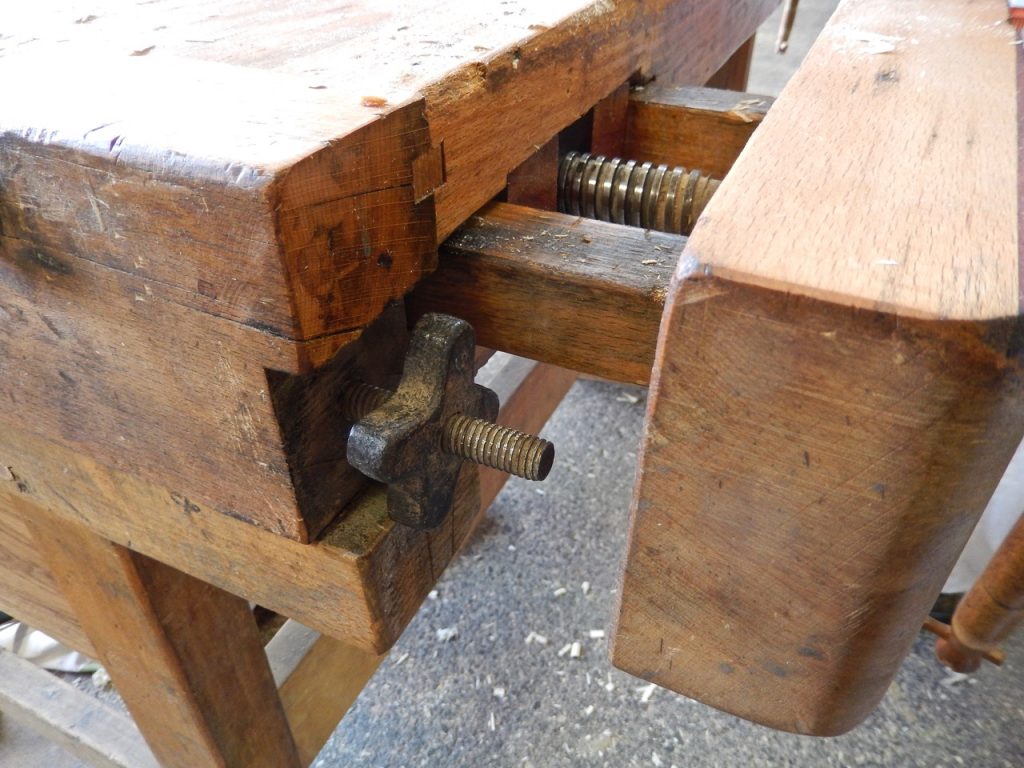
To use this jig one needs to open the vise to match the approximate thickness of the workpiece. Then the Knob with Threaded Through Hole is turned out of its counterbore nest along the Stud until it heels against the sliding jaw.
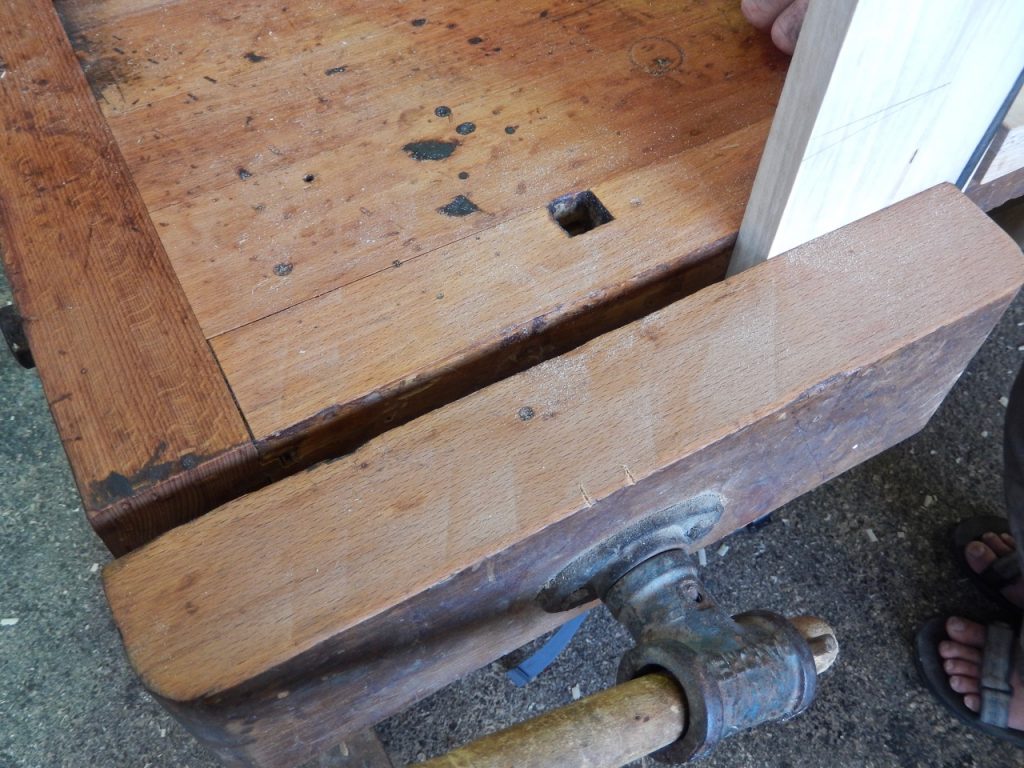
Now it’s time to place the workpiece in the jaw’s opposite side and tighten the screw.
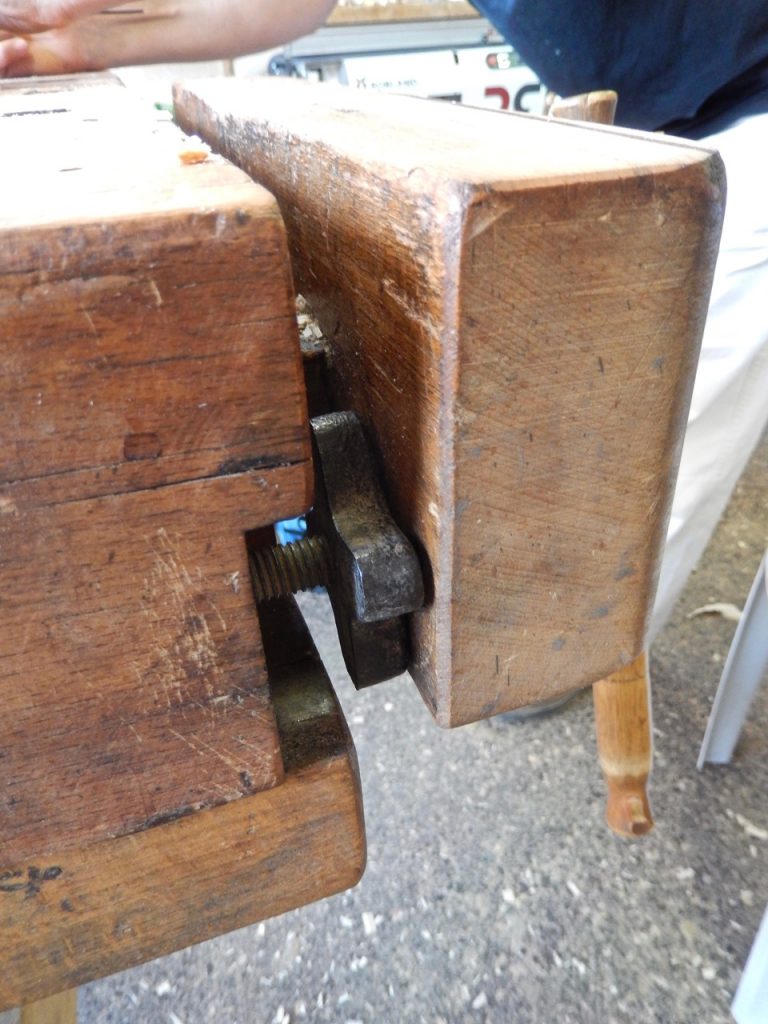
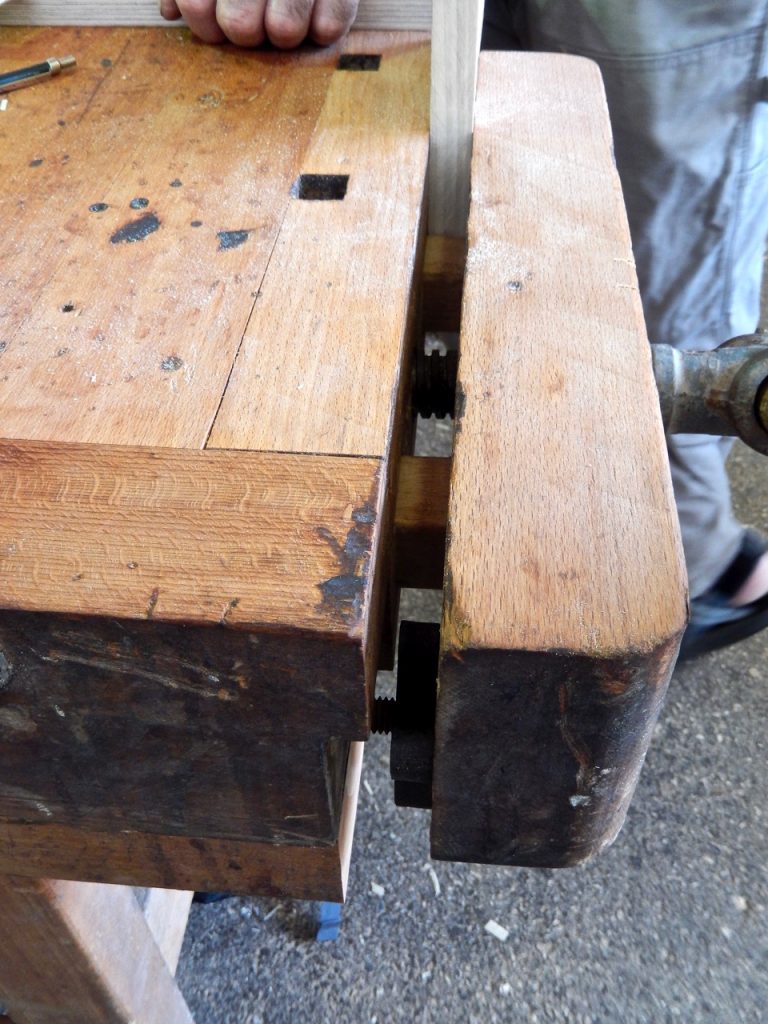
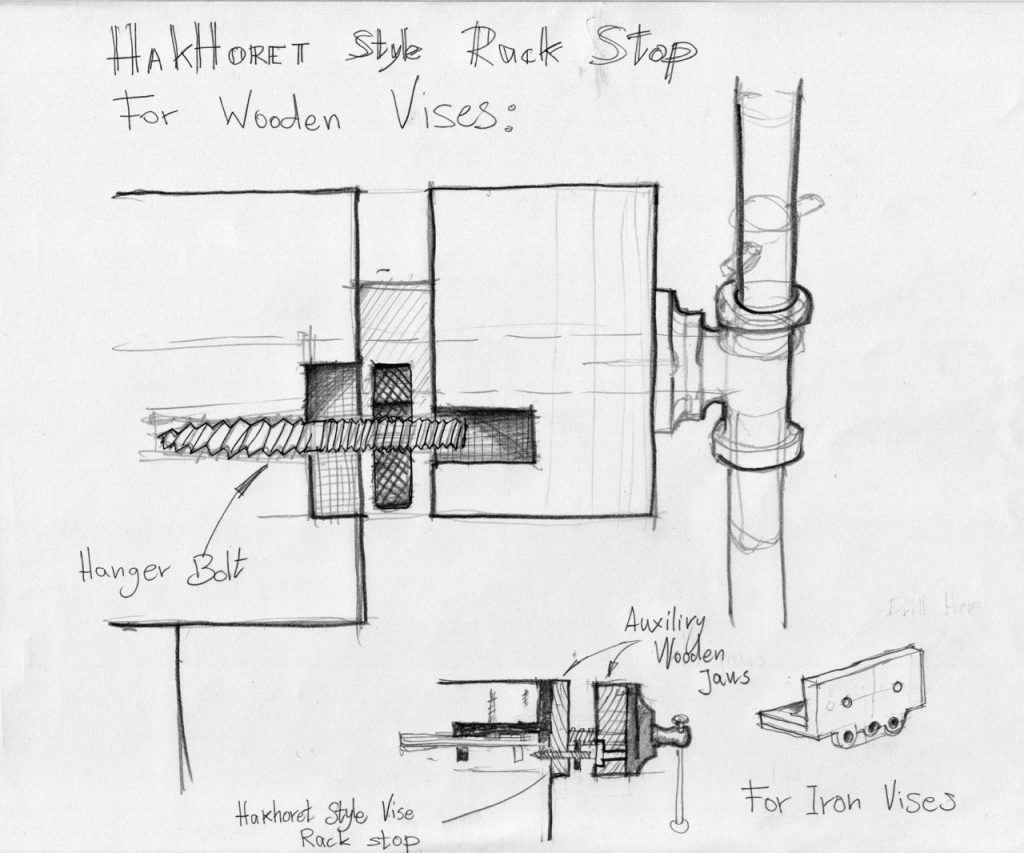
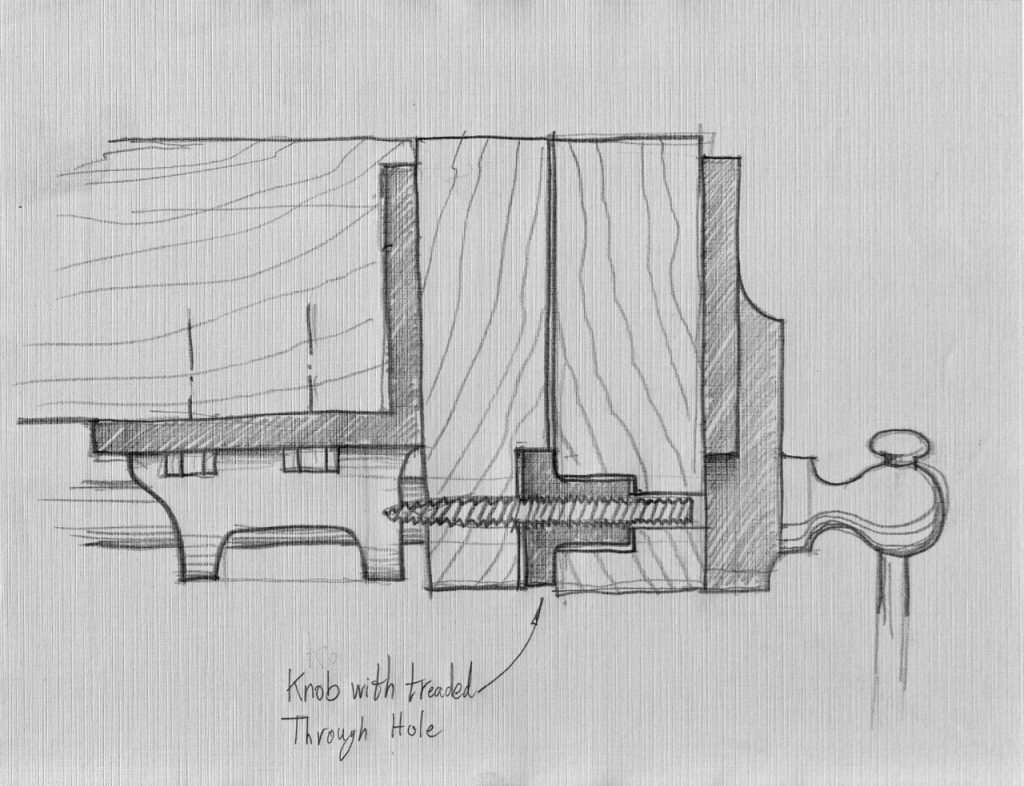
In case of a cast iron vise, you can anchor the Stud in the stationary auxiliary jaw. House the Knob partially in a counterbore hole drilled in the stationary auxiliary jaw and in the opposite jaw which is mounted to the moving jaw.
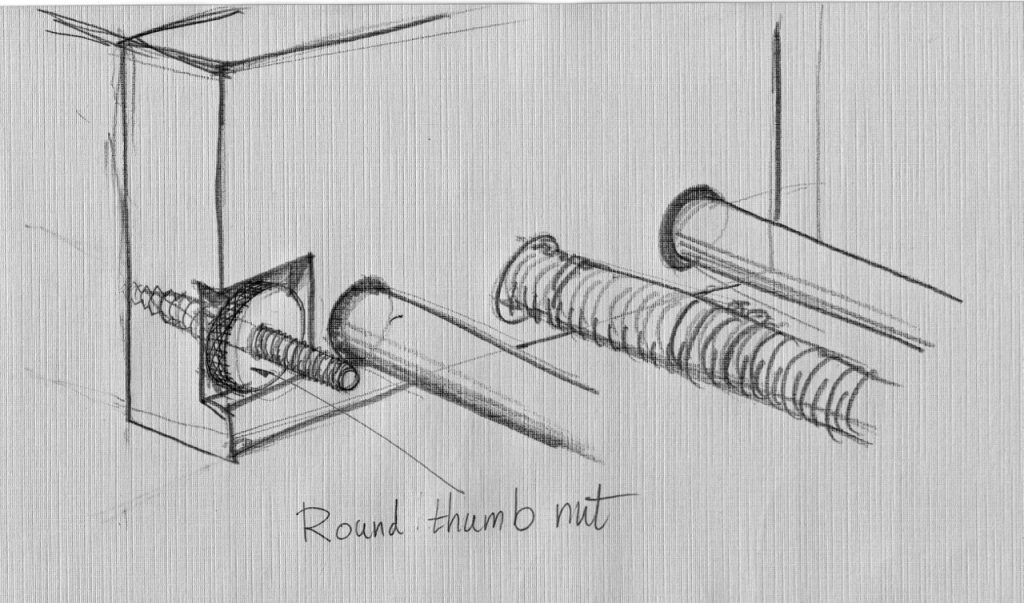
 For more workbench tips check out “Workbenches Revised Edition: From Design & Theory to Construction & Use” by Christopher Schwarz at shopwoodworking.com.
For more workbench tips check out “Workbenches Revised Edition: From Design & Theory to Construction & Use” by Christopher Schwarz at shopwoodworking.com.
Here are some supplies and tools we find essential in our everyday work around the shop. We may receive a commission from sales referred by our links; however, we have carefully selected these products for their usefulness and quality.









Yoav, this is certainly an elegant way to combat racking in a shoulder vice. But I rarely need this since I have a traditional cabinetmaker’s bench with a tail vice which is perfect for vertical items with no racking and full height to the floor. I often wonder why this value is overlooked in the current craze for Roubo style benches. Your posts are great!
Thanks, Yoav. My solution is not nearly as cool or original. I keep a bunch of 2″x3″ kitchen laminate samples on a large key ring. The samples are free at big box stores. Drill a hole and connect them with a key ring or string. To use, select the right thickness to counter-balance whatever work piece you’re clamping in your vise. Like I said, not new or imaginative, but quick and effective. Love your articles, Yoav! –Rich